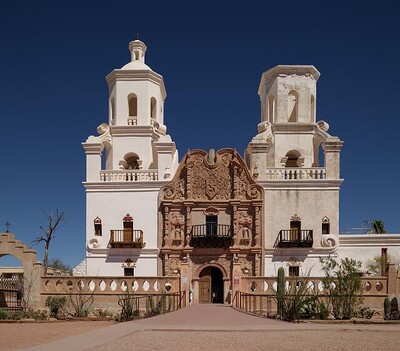What do Taliesin West, the “Welcome to Fabulous Las Vegas” sign and the Hoover Dam have in common? They are all properties listed on the National Register of Historic Places.

The National Register of Historic Places is the federal government’s official list of historically significant sites in American history, archaeology, architecture and culture, recognized at national, state and local levels, all deemed worthy of preservation. Established by the National Preservation Act of 1966, the National Register is part of a national program to identify, evaluate and preserve America’s touchstones of collective heritage.

The National Park Service maintains and expands the National Register, which has grown to over 98,000 properties since 1966, including National Landmarks, districts, buildings, structures, objects and shipwrecks. The National Register online database provides access to the historic property records, including registration forms, photographs and maps. Records for historic properties designated through 2012 are in a searchable table, while records since 2013 are available in NPGallery.
In addition to maintaining the National Register and making it accessible to the public, the National Park Service also reviews and evaluates nominations, helps qualified sites receive benefits and incentives, and produces federal publications. These federal publications, such as the National Register of Historic Places Bulletins, contain guidance for evaluating and listing historic sites. Topics covered include; “Nominating historic vessels and shipwrecks to the National Register of Historic Places” and “Guidelines for evaluating and documenting properties associated with significant persons.” The Best Practices in Review series contains further examples on specific topics like “Evaluating Non-Historic Exteriors” and “Evaluating Common Resources.” Other National Register publications include brochures, policy clarifications and forms and technical checklists.
More than just a list, the National Register database and publications are a treasure trove of information for researching local, state and national history, as well as family, property and community histories. To explore Arizona history, search the National Register database for specific Arizona property names and counties. To trace family or property histories, search for specific addresses.

Despite its importance, the National Register does not fully represent the diversity of the American experience. A 2020 Congressional Research Service report revealed that as of 2014, less than 8% of sites on the National Register were linked to historically underrepresented communities. This statistic calls for a greater commitment to add new historic sites to the list to safeguard our collective heritage. To learn more about communities represented on the National Register, search the database for areas of significance and visit the National Register Features. To learn more about the nomination process for new historic sites, visit Guidance for the National Register of Historic Places.
-Janelle Nash, Collections Services Supervisor, Government Information